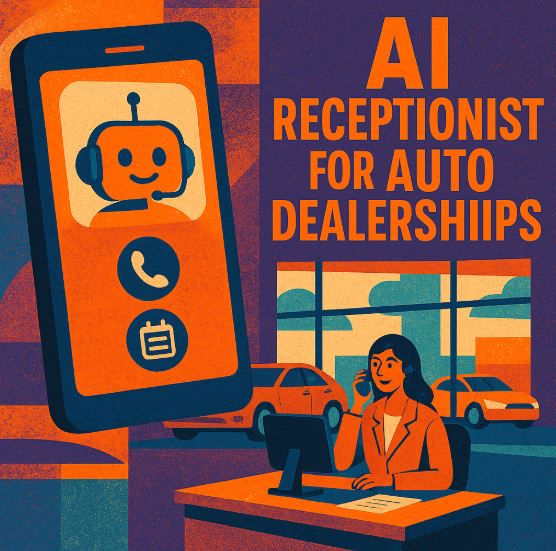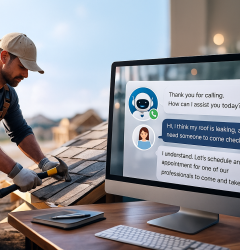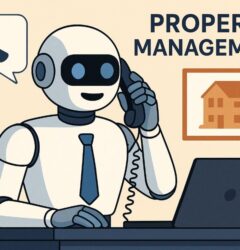
The new first impression at your store starts on the phone
If your team is like most rooftops, you’re juggling showroom guests, walk-ins, online leads, and a ringing phone. An ai receptionist for auto dealerships changes that first impression by answering instantly, routing precisely, and booking appointments without putting customers on hold. Shoppers are already happier with a more digital and seamless buying journey than ever before, and the stores that pick up quickly and move customers to a next step win outsized share. Cox Automotive Inc.+1
Why phones still move metal (and retention)
Phone calls are not “just another channel.” They’re intent-rich and closer to the decision. Multiple industry analyses show that callers convert faster and stay longer than web leads. In fact, callers convert about 30% faster and have materially higher retention than form fills. This is key for both sales and service retention KPIs. When you’re building lifetime value around F&I and fixed ops, those are numbers you can’t ignore. Invoca
On the profitability side, nearly half of a typical franchise dealership’s gross profit comes from fixed operations. That means missed service calls aren’t just inconvenient, they’re expensive. If an ai answering service for auto dealerships keeps your lane booked tighter and reduces “no answer/please call back” phone tag, you protect the profit center that pays the bills. DealerLogix
Speed-to-lead: 5 minutes (or less) changes the outcome
The speed story is simple: the faster you respond, the more you convert. Studies summarizing thousands of lead interactions show that reaching out in the first five minutes can make you ~21x more likely to create a sales opportunity compared to waiting just half an hour. Most businesses still take hours. An ai receptionist for auto dealers closes that gap by answering in one ring, qualifying, and booking immediately. Then it hands off warm when a human is needed. Amplemarket+1
Where an AI receptionist helps across the dealership
Sales floor triage without lost ups
A shopper calls about availability on a specific trim. The ai answering service for auto dealerships confirms in-stock status from your feed, offers test-drive slots, and sends a text confirmation with directions. If the caller asks for a salesperson by name, it routes or warm-transfers. If the unit is sold, it suggests alternates and keeps the appointment momentum.
Service lane that just… answers
“Do you have any oil-change openings this afternoon?” gets an immediate answer with real-time slots. The ai receptionist for auto dealerships can also push recall notices, handle “status check” calls, and text updates that reduce inbound volume. When the request is unusual (e.g., drivability complaint triage), it escalates to your advisor line.
BDC that scales coverage, not payroll
Overflow at lunch, after hours, or during a Saturday rush is where deals and CSI points slip. An AI layer keeps your BDC’s calendar full and your SLAs intact, then syncs transcripts and call summaries into your CRM so your team starts conversations at context, not at zero.
The business case (with a back-of-the-napkin model)
Below is a simple illustration. Swap in your numbers to see your range.
| KPI / Assumption | Conservative Example | With AI Receptionist | What Moves the Needle |
|---|---|---|---|
| Monthly inbound sales calls | 600 | 600 | Volume holds; answer rate rises |
| Answer rate | 70% | 96% | 24/7 coverage; no holds/abandon |
| Appt set from answered calls | 20% | 28% | Faster response; better routing |
| Show rate | 60% | 68% | Confirmations + SMS reminders |
| Appts set (count) | 84 | 161 | 600×(0.96×0.28) vs. 600×(0.7×0.2) |
| Shows (count) | 50 | 109 | Fewer “no-shows” |
| Close rate from shows | 28% | 28% | Sales process unchanged |
| Retail units from phone | 14 | 31 | Nearly 2× units from same volume |
| Gross per copy (front+back) | $2,000 | $2,000 | Placeholder—use your store avg |
| Incremental gross / month | — | +$34,000 | (31–14)×$2,000 |
Even if your exact percentages differ, two levers: answer rate and speed-to-appointment create meaningful lift. The same logic applies in service, where every booked hour reduces idle tech time and missed maintenance opportunities. And remember, customers report record high satisfaction when the online and in store experience connect smoothly. Phones are often the bridge.
Shoppers and owners expect quick answers, transparency, and a seamless transition from a website to a human. The latest buyer-journey research shows satisfaction peaks when digital and in dealership steps feel integrated which is exactly what happens when the call experience is immediate, consistent, and informed by the same inventory and appointment data they saw online.
Meanwhile, phone interactions disproportionately indicate purchase intent. One call handling study tied up to 28% of dealership callers to an eventual vehicle purchase, with the majority of inbound sales calls carrying explicit buying intent. If your store misses even a slice of those, you’re leaving units on the table. Marchex
Implementation playbook (zero drama)
Start with your top 10 intents: “sales appointment,” “availability check,” “trade-in estimate,” “service booking,” “recall questions,” “status check,” “parts,” “finance,” “specific person,” and “store hours/directions.” For each, write a one sentence goal (eg “Offer the next three test-drive times and confirm via SMS”). Then decide escalation rules: when to warm transfer vs take a message. An ai answering service for auto dealerships like AnswerBug can map those flows in minutes while leaving room for store personality (short, friendly greetings, and a tone that fits your brand).
Add bilingual coverage if your market needs it. English Spanish switching is a high ROI add that reduces friction for first-time callers and boosts conversion. If you want a sense of how we approach that, our recent Bilingual AI Receptionist deep dive outlines the playbook.
Guardrails that dealers care about
No one wants a bot guessing at price quotes or policy. Good systems respect boundaries: share pricing ranges but invite a visit for firm quotes, book service to policy (recalls vs. customer pay), and route sensitive F&I questions straight to humans. For compliance and brand protection, require call transcripts, opt out language for SMS, and simple toggles to adjust scripts by department. The result is consistent, measurable, and coachable which is something many stores struggle to maintain across shifts.
How this dovetails with your BDC and CRM
An ai receptionist for auto dealerships isn’t a replacement for your people but a coverage and quality multiplier. It answers in one ring, books, tags the call (vehicle of interest, department, outcome), and drops the summary into your CRM. Your team starts the conversation with context, and managers finally get clean reporting on answer rates, appointment set/show, and time to first response. Couple that with the “five-minute rule,” and you’ll see more first call appointments and fewer abandoned leads.
Internal reads if you’re comparing industries
Seeing how other verticals do it can help you calibrate what “good” looks like. Recent pieces from our blog that pair well with the dealership playbook include:
Quick checklist you can use this week
Forward your main line and sales/service queues to the ai answering service for auto dealerships after two rings. Load your inventory and scheduler connection, then test the top five scenarios. Add SMS confirmations and 24-hour reminders for both sales and service appointments. Set daily digest emails to your desk managers and service manager with missed-call recaps and “calls needing human follow-up.” By Friday, compare answer rate, appointment set rate, and show rate against last week’s baseline.
Why AnswerBug for your store
AnswerBug is our ai receptionist for auto dealerships, built to sound natural, pick up in one ring, and book confidently. It handles overflow and after-hours, switches to Spanish when needed, syncs summaries into your CRM, and warm-transfers to your team the moment a human makes the difference. It’s the same engine we’ve used across clinics, property management, and trades, but tuned for dealership realities like inventory lookups, BDC routing, and service-lane SLAs. For bilingual specifics, see our recent post on language support; for high volume booking patterns, our electricians guide shows the same muscles in a different context.
If you’re ready to stop letting calls slip and start booking more showroom and service appointments, try AnswerBug. Forward your main line, map your top intents, and see measurable lift in a week.
See AnswerBug in action


